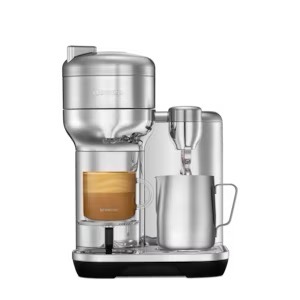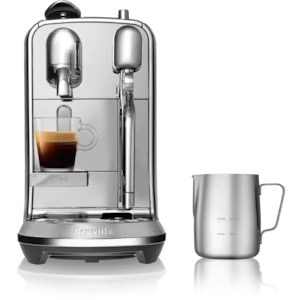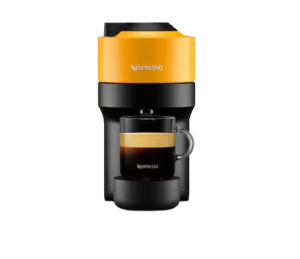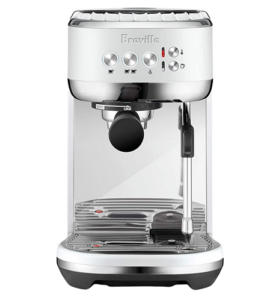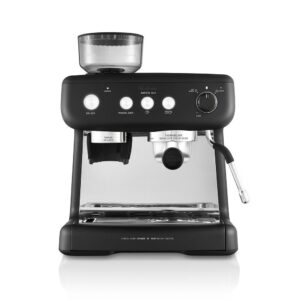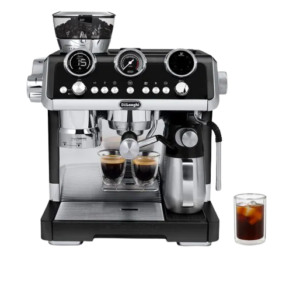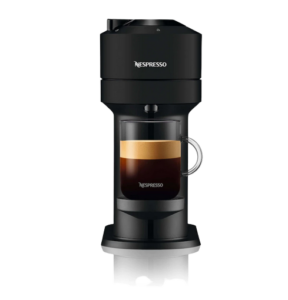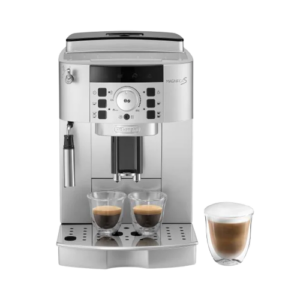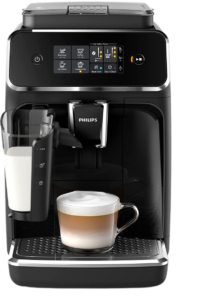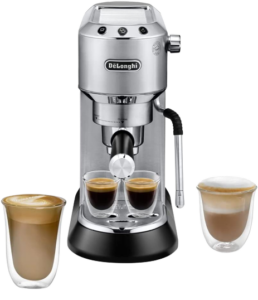A stepping stone
De’Longhi Rivelia review: Room to grow
Delonghi Rivelia is a compact, and intelligently designed automatic espresso machine that makes brewing simple. Despite this, it won’t be for everyone.
In defiance of my best efforts, the Rivelia couldn’t get my favourite beans to taste right, and the in-built frother struggled to tackle plant-based milks. If you’re an “extra hot, whole milk latte” kind of person then this machine will up your at-home coffee game out of the box, but if you’re more of an “iced oat latte” then you’re in for some trial and error.

What we like
Taste profiles: In the interface, you can set up up to four different profiles, and customise your coffee preferences per person. Each profile has access to 18 different coffee types within which you can preset the size and intensity of the coffee. Setting up these profiles and changes is intuitive and doesn’t add much time to the brewing process at all, especially when you’re playing around with a new machine.
Touch pad brewing: Almost every part of the brewing process is controlled via the 3.5-inch colour display on the top of the machine. Touch screens are everywhere these days, and not-so-techy products sometimes tend to cheap out on them. These displays end up with janky animations, or poor touch sensitivity, but De’Longhi isn’t one of them.
The touch display is bright with vibrant colours, and excellent response times. It’s a good thing too because without a seamless touch display it would be harder to appreciate and utilise taste profiles.
Bean canister design: The whole design of the Rivelia is lovely, but I am especially taken by the bean canister system. In the box you’ll get two removable bean canisters that screw in and out of the top of the machine. It seems so simple, but it is a clever solution to switching out your beans, while making cleaning the jar, and storing them easier at the same time.

What could be improved
A lot of brew-ha: As I mentioned up top, I have struggled to get my favourite coffee beans to taste the same out of the Rivelia as they do out of the De’Longhi Magnifica S. In side-by-side testing, the same beans pulled into an espresso from the Rivelia taste significantly more bitter and lose a lot of their flavour.
To troubleshoot, I fiddled with the grind size, which caused its own set of problems. Finer grind settings saw the espresso drip rather than flow through, while higher settings ended up with a thinner crema. Grind setting 5 was the happy medium, but still the flavour didn’t come through how I know it.
Another issue could be the brewing temperature. Shots pulled from the Rivelia are around 4-6 degrees warmer than what I usually brew at. Even when I jumped into settings to switch the brew temperature to ‘Low’, I was getting the same temperatures coming through with the same taste.
It is possible that these extra degrees could be just that little bit too hot, and scald my preferred beans since others I tested didn’t have as stark of a difference in taste. There was still a lingering bitterness no matter which coffee I pitted against the machine, but admittedly this was less obvious on bolder beans.
Bitter coffee tends to come from over extraction, which can be fixed by finessing different brewing metrics. Over extraction can be due to grind size, bean freshness, coffee-to-water ratio, brewing temperature, and water hardness. Since I was doing side-by-side tests I could rule out a bunch of these, leaving us with either brewing temperature or the coffee-to-water ratio as the main issues, or maybe a combination of the two. Even on the ‘Small’ espresso setting the Rivelia still pulled a longer shot than the Magnifica S.
Having more precise brew settings around temperature, and size of the coffee could help to combat this. As it stands the Rivelia lets you pick between three settings for both; a low end, a mid, and a high. The actual measurements of these are shrouded in mystery which makes diagnosing taste issue an up-hill battle.
If you prefer a more delicate cup of coffee then you may go through the same struggles trying to get your beans to match up to their flavour profile, but if you’re more into beefy sips then it shouldn’t be as much of an issue.
Brewing time: Overall brewing time is much slower compared to other coffee machines we’ve tested. It varies depending on the type of coffee, but brewing a long black for example took well over two minutes. A De’Longhi product specialist let me know that this was a feature and not a bug, but that sure is a long time to wait for a coffee to pull. For comparison my usual coffee machine takes less than 30 seconds from the time I press the long black button, to me stepping away with it.
Frothing is touch and go on plant-based milks: Like most in-built frothing or steaming systems, the Lattecream system isn’t tuned for plant-based milks. It warms up oat milk but doesn’t quite get that thick aerated foam that you get with full cream.
It is also important to note that this system won’t get you microfoamed, latte art capable milk, regardless of your milk choice. If you want that kind of result you’ll be better off going with a coffee machine with a steam wand.
For the nerdier home coffee connoisseur, the De’Longhi Rivelia is missing granular control, but that doesn’t make it a bad machine. If you’re looking to upgrade from pod machines to beans, or take some of the messy work out of grinding and steaming your cup every day then the Rivelia will make for an easy transition.
With its moderate controls you can also dip your toes into more in-depth brewing specs like temperature and coffee-to-water ratios. While you won’t get total control over your brewing, it is a great stepping stone for the budding coffee-snob and at-home barista.
Related Articles












